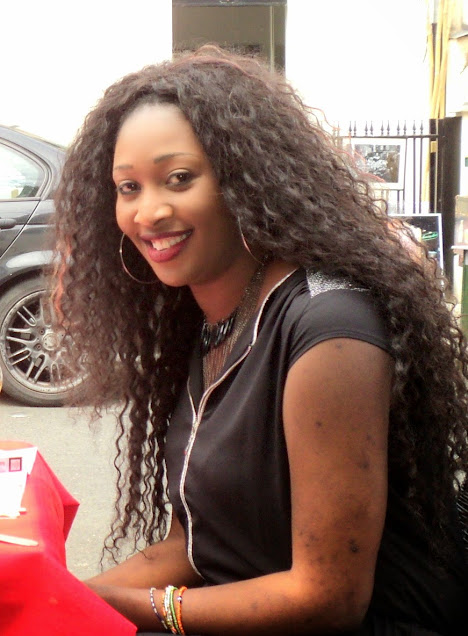Every weekend, within walking distance of our
apartment, the world’s largest flea market (marché aux puces, pronounced
marshay-oh-poos) takes place near the Porte de Clingancourt metro, in the area known
as Saint-Ouen. (Puce is French for flea, and is also what they call they chips
in their chip-and-pin credit cards.) There are more than 2,000 vendors, and their stalls stretch for blocks.
According to Wikipedia , the market began in 1885,
but even in the Middle Ages, ragpickers were selling old clothes in Paris,
which were probably full of fleas, and hence the name! Today the Saint-Ouen
event includes several markets, each with its own special flavor.
Outside of the main section, vendors
ply their trade with colorful stands featuring everything from African carvings
to jewelry and candy. This is really the most interesting part of the market,
which is teeming with people. When
Tricia and Jim went with us, we held on tight to our purses and wallets and did
not take much of value with us, because the market is a known site for
pickpockets.
 |
| A food market we passed on the way to the flea market. |
 |
| Need any clothes? |
 |
| The candy prices look good. |
 |
| You can even shop for underwear. |
 |
| Just one lane in a huge marketplace. |
 |
| Tricia bargains for a deal. ("Special price--just for you.") |
 |
| Outside a Senegalese cafe where we had a good lunch. |
 |
| Of course the dog's owner has him sleep there, so people will stop. |
 |
| There's something for everyone. |
 |
| Fatou, a friendly local whom we met at the market. |
Now, contrast this market area with the more elegant one pictured. The stands in that section are permanent, the equivalent of nice stores. Antiques abound, but no bargains!
 |
| Stunning items with prices to match. |
 |
| I love this wallpaper! I suppose it's a wee bit too formal for our condo? |
Although the market is only open to the public on the weekend, Monday is a day for dealers and collectors who can meet with the vendors by appointment. Having struck up a conversation with one of the sellers of antique Chinese porcelain, Kevin decided to go back on Monday, just to chat. (Antique Asian porcelain is Kevin's passion, although one he can't indulge in too often.) Guess what? The merchant had to run a quick errand and asked Kevin if he'd mind the store for him. Can you believe it? He left him there with all of his expensive porcelain, and to top it off, Kevin doesn't speak French! Fortunately, no one came in while he was there, but we are still dumbfounded that the owner would put such trust in him. He must have a honest face.



















































